In today’s fast-paced and dynamic professional world, workplace meetings are pivotal in stimulating collaboration, brainstorming ideas, and making critical decisions. However, many factors, like lack of sufficient preparedness, technical glitches, and poorly managed time, among others, may pose severe challenges to a successful meeting. Overcoming such meeting challenges is crucial to ensuring professional meet-ups yield meaningful results.
This article will explore pragmatic strategies and techniques to overcome factors that obstruct the smooth execution of workforce meetings.
15 Types of Meeting Challenges are as follows:
Here are the 15 most common challenges that affect the productivity and effectiveness of workplace meetings.
1. Vague Goals or Objectives
Vague or unclear objectives are typical meeting challenges. When the purpose of a meeting is not clearly defined, it can lead to various issues that hinder productivity and effectiveness.
Participants may not know what the meeting aims to achieve, resulting in discussions that stray off-topic or lack direction. Due to a lack of preparedness, they may meander through irrelevant topics, leading to wasted time and reduced productivity. Meetings with vague objectives might miss meaningful conversations or fail to address critical issues.
Remedy: To overcome these meeting challenges, outline your objectives at the start of the meeting. Goals should be drafted so that all participants have a measurable outcome to achieve together. You should share the meeting’s purpose and desired outcomes in the agenda with other participants. You must ensure the SMART (Specific, Measurable, Achievable, Relevant, and Time-bound) objective.
Scenario: James, the Operations manager, and Olivia, the Sales manager, work in the same company. James calls a team meeting without any specific objective to discuss the company’s operations. On the other hand, the sales manager, Olivia, conducted a team meeting to discuss last month’s sales.
James welcomes the team and starts the meeting, but it becomes apparent that there is no clear agenda. The team members exchange uncertain glances, wondering what specific topics will be covered. Therefore, he struggles to bring a clear structure to the conversation.
Olivia begins the meeting by stating the agenda: “Review of Last Month’s Sales Performance.” She guides the team through the presentation, highlighting successful strategies, areas for improvement, and setting goals for the upcoming month.
2. Disorganized Agendas
A disorganized agenda as a meeting challenge is defined as a list of discussion topics lacking structure, clear objectives, and proper time allocation. It includes random topics without a precise sequence or prioritization.

A disorganized agenda can lead to confusion, wasted time, and inefficient discussions during the meeting. Participants may struggle to understand the meeting’s purpose, causing discussions to veer off-track. It leads to distraction, reduced productivity, and missed opportunities to address critical issues.
Remedy: On the contrary, a clear and well-planned agenda will chart a proper sequence or structure to the meeting, ensuring it starts and finishes on time. It will also guide participants throughout the session without missing out on all critical discussions and staying on top of the topic.
Scenario: One growing corporate company has organized an AGM where department heads, board members, and attendees are present. Charles heads the Accounts Department and is known for his deep financial acumen but a disorganized work style. He enters the boardroom with a stack of loose papers and a slightly overwhelmed expression. His notebook contains financial reports, budget sheets, and notes scattered within its pages.
Conversely, Anderson, who heads the Social Media Department, is recognized for his systematic and structured approach. He walks in with a sleek portfolio and a laptop. His notebook is neatly organized, and a well-structured agenda is visible on the first page.
During decision-making, Charles faces challenges in providing concise answers due to the disorganized nature of his materials. Contrarily, Anderson uses his organized agenda, summarizes key points, and facilitates a smooth decision-making process.
3. Poorly Managed Time
Poorly managed time is among the most ordinary meeting challenges. So, setting up meetings can be problematic for many team members working from different places worldwide. It is challenging to consider everyone’s timeline and choose a time that works well for everyone.

Meaningful discussion gets hampered and sometimes overlooked. Due to poorly managed time, some participants did not get enough time to express themselves fully. Some participants remain aloof from seeking clarification or asking questions.
Remedy: You must implement several strategies to overcome time constraints and ensure that meetings are scheduled. Make sure that all agenda items are adequately addressed within the allotted time. You should allocate specific time limits for each agenda item to prevent discussions from dragging on indefinitely. Give priority to the most important topics first to ensure they receive sufficient time for discussion. Be mindful of potential technical issues affecting time management, and have contingency plans.
To get more insights about overcoming your meeting anxiety, read our article, From Nervous to Confident: 10 Tips for Managing Meeting Anxiety.
Scenario: Alex, a team member, scheduled a meeting at 3 pm. He arrives 10 minutes late in the conference room and finds that all participants are casually chatting with each other. He starts meetings without any agenda, and the team jumps between topics without clear direction, wasting time on unrelated issues. This extends the meeting beyond the scheduled duration. Therefore, a lack of time management leaves the team unproductive and directionless.
In the other scenario, the project manager, David, calls a meeting at 10:00 am. He has already circulated the meeting agenda to the team members in advance. That’s why all the team members carry relevant materials with them. He arrived 5 minutes before the scheduled time and started the meeting on time. The meeting concludes on time, and action items are assigned to team members. The team leaves feeling accomplished, knowing the meeting was productive and well-managed.
4. Disruptive Audience
Dealing with a disruptive audience during a meeting can be challenging. They often intend to cause chaos or interfere with the meeting’s peaceful proceedings.
Handling a disruptive audience requires a diplomatic and assertive approach to maintaining order and creating a respectful environment for all attendees. Everyone must get a chance to be heard. Doing so will ensure the meeting proceeds without any disruption or stress. It will also promote meaningful and effective conversations, leading to a successful meeting.
Remedy: In the case of virtual meetings, you can mute the disruptive participants. The approach will vary depending on the specific situation. If someone continues to disturb the meeting by sending irrelevant messages, you can discontinue or remove that disruptive member.
To overcome a disruptive audience, you have to remain calm and composed. Use non-verbal cues by maintaining eye contact and exhibiting confident body language. You can use humor as a tool to diffuse tension and regain control. You must balance disrupting participants and the other audience’s right to participate and express themselves.
Scenario: Michael, a project manager, conducted a meeting in a conference room at 2 pm. The meeting started with a detailed agenda circulated by Michael. As soon as the meeting proceeded, he discovered that Emily and Mike from the sales and marketing team had started a side conversation, disrupting the meeting flow. At first, Michael paused and recognized the disruption by looking at them and returning to the agenda. However, Emily and Mike continued their side conversation without paying heed to his subtle warning. Thereafter, Michael had to be firm and tell Emily and Mike to stay focused and share their input.
Thus, Michael could strategically manage an instance of disruptive behavior by addressing it promptly, redirecting the focus to the agenda, and involving the disruptors in the discussion.
5. Less Number of Participants
Fewer participants than expected is one of the meeting challenges where the number of attendees or participants is lower than expected or desired. Fewer participants mean less diverse perspectives and expertise available for decision-making and problem-solving.

The absence of key stakeholders or individuals who hold vital information can lead to incomplete discussions. Fewer participants might lead to a limited pool of ideas and potentially hinder creative problem-solving. With scarce participants, the opinions of a few individuals may disproportionately influence the meeting outcomes.
Remedy: For any meeting to be successful, maximum participation is urged. Before conducting the meeting, sending a professional email to every concerned person and inviting them to present for the workplace meeting is essential.
Scenario: Charlie, a team leader, recognizes the importance of high attendance, so he plans a team meeting well in advance. He sends all the team members a detailed calendar invite with a clear agenda and meeting objectives. He takes extra initiative before the meeting to gather inputs and concerns from the team members. He chooses a suitable time, considering the team’s preferences gathered from the pre-meeting inputs. This results in maximum attendance and a highly well-organized workplace meeting.
6. Dominating Participants
Dominating participants can seriously challenge effective and successful meetings. These individuals tend to monopolize conversations, frequently interrupting others and exerting control over discussions.
Dealing with dominating participants can hinder collaboration, reduce participation from others, and result in unbalanced decision-making.
Remedy: You can ensure a more collaborative and inclusive meeting environment where all participants feel valued and have an equal opportunity to contribute. Effectively managing dominating participants can lead to more productive meetings, better decision-making, and improved team dynamics.
You can read our article,27 Conference Tips for Getting the Most Out of Your Attendee Experience, to prepare for future B2B events.
7. Technology Glitches
Technology glitches refer to a technical problem or malfunction that disrupts the smooth functioning of virtual or online meetings. It occurs when the technology, such as video conferencing software, internet connectivity, hardware devices, or collaboration tools, encounters issues that prevent participants from effectively communicating or engaging during the meeting.

Technology glitches can vary in severity and impact, but they generally cause interruptions and may lead to delays in conducting meetings smoothly.
Remedy: You can mitigate technology glitches by testing all the required technical equipment in advance. You should be prepared with alternative backup meeting platforms in case of severe technology failure. Consider recording the meeting as a backup to share with those who may have missed it due to technical difficulties.
Scenario: Alexander, the team lead, calls a virtual workplace meeting. At the time of the meeting, a few participants experienced intermittent internet disruptions. Alexander immediately suggests that participants facing disruptions switch off their video to conserve bandwidth. He asks participants to share their thoughts via chat if they encounter difficulties with audio. He also keeps the recording option enabled to refer to the meeting inputs and outcomes in the future.
In this way, the meeting continues smoothly, with all team members actively participating, even facing technical challenges.
8. Disagreement or Conflicts
Disagreements or conflict in a meeting refers to situations where participants have differing opinions, viewpoints, or interests that lead to tension, dispute, or hostility during discussions.

These conflicts can arise due to diverse perspectives, varying priorities, personal biases, or competing interests among participants. Ultimately, it results from discrepancies or differing interpretations of information presented in the meeting. Addressing and resolving such challenges effectively is essential for maintaining a productive and respectful meeting environment.
Remedy: You can overcome these workplace meeting challenges by remaining composed and treating everyone respectfully, even during disagreements. Be a good listener to understand different viewpoints and concerns. Address misunderstandings and seek clarification to prevent conflicts based on misinformation.
If emotions are high, consider taking short breaks to allow participants to cool off before resuming discussions. Record decisions and agreements made during the meeting to ensure everyone is on the same page. After the meeting, follow up with individuals involved in conflicts to address lingering concerns and doubts. Look to resolve everyone’s issues so that the work isn’t affected.
Scenario: A meeting is called to discuss the newly created website layout between Margaret- the Graphic Designer; Donald- the Marketing Specialist; and Laura- the CEO. Margaret expresses concern that the logo design inadvertently includes elements that clash with her religious beliefs. Donald fails to recognize the issue and defends the design, emphasizing its market appeal.
Laura acknowledges the unintended impact on Margaret. She proposes a midway solution and asks the team to revise the logo design, ensuring it aligns with the company’s values while respecting all community’s beliefs.
9. Language and Cultural Barriers
Language and cultural barriers are among the most significant workplace meeting challenges arising when participants come from diverse linguistic backgrounds and cultural settings, leading to potential communication and understanding issues.
Language and cultural barrier meeting challenges can hinder effective collaboration, cause misunderstandings, and impede the overall productivity of the meeting. Some common issues that can cause such misunderstandings are different accents, heavy use of jargon, various cultural norms, etc. Cultures may have distinct decision-making processes, leading to varying levels of participation or input during discussions.
Remedy: Overcoming language and cultural barriers is an ongoing methodology. It can be overcome by adaptability and with a commitment to carrying on effective communication. You have to embrace diversity and actively work to bridge gaps between co-workers. Such steps will result in harmonious interactions in multicultural and multilingual workplace settings.
Scenario: The conference room is full of sales representatives from all over Europe. Soon, the meeting sees a heated argument over language barriers between Maria and Julien, who come from Portugal and France.
Maria insists discussions should be primarily in Portuguese, as she feels more comfortable expressing complex ideas. On the other hand, Julien argues that essential details might lost in translation and suggests English as a common ground.
Antonio, the manager, senses the escalating tension and addresses the language barrier issue. He suggests that information be shared in English to ensure everyone comprehends and, at the same time, allows team members to express themselves in their native languages. In this way, he eases the tension, allowing Maria and Julien to contribute comfortably.
10. Lack of Decision-Making Ability
A lack of decision-making ability during meetings refers to participants needing help making clear and timely decisions on the topics or issues being discussed.
This meeting challenge can arise due to various factors, such as indecisiveness, conflicting opinions, insufficient information, or an unwillingness to commit to a particular course of action. When decision-making is lacking, meetings can become unproductive, and essential matters may remain unresolved.
Remedy: You can overcome a lack of decision-making ability by developing various sets of skills. You should gather all the related information to help you become a competent decision-maker. Feel free to consult trusted colleagues or experts to seek their input. You should be responsible for your decisions, even if they lead to failure or success. It will help you grow, and you will earn accountability.
Scenario: Anna, a project member, and Pamela, a project lead, work for the same team. Anna is more knowledgeable than Pamela but hesitates to make any decision on behalf of the team. On the other hand, Pamela is efficient in deciding on time.
In the crisis, Anna precipitates sweats and fails to address issues. However, Pamela assesses the situation, gathers relevant information, and proposes a solution based on her expertise. This resulted in a smoother project management process.
11. Failure to Implement the Last Decided Actions
Failure to implement the last decided actions in a meeting refers to a situation where the decisions and action items agreed upon in a previous session are not executed or followed through as intended.
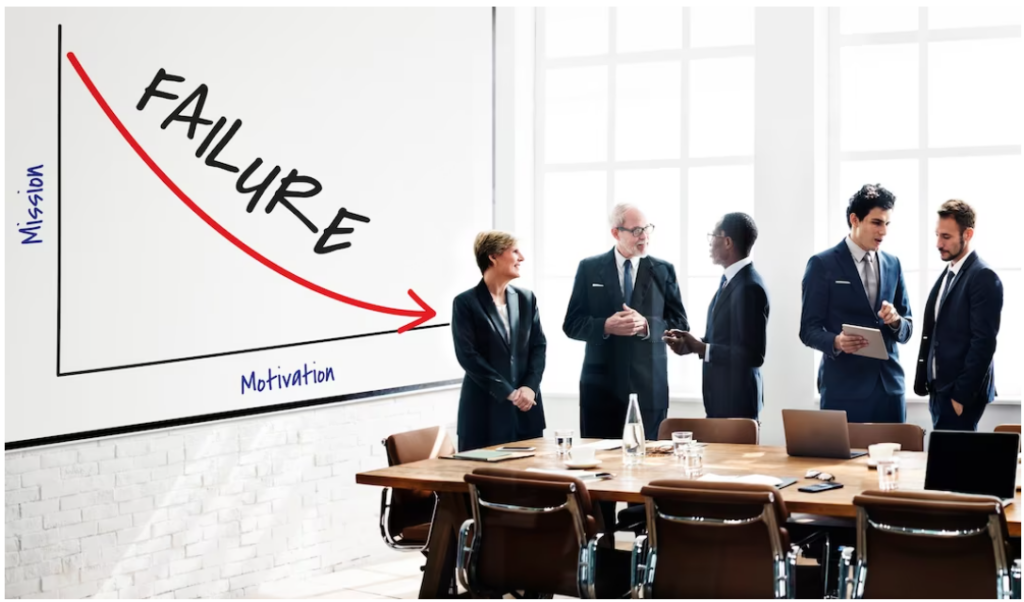
This meeting challenge can occur for various reasons, including miscommunication, lack of accountability, shifting priorities, or simply forgetting the agreed-upon tasks. When decisions are implemented, it can save time, reduce trust among team members, and lead to significant progress on important initiatives.
Remedy: You can overcome the failure of implementing the last decided actions in workplace meetings by simply identifying procrastination, lack of motivation, or unclear goals. If you have a long list of activities, prioritize them based on importance and deadlines. You should cultivate self-discipline by setting regular follow-ups with your teammates.
Scenario: A Mackrobe company has organized a monthly review meeting between operations and e-commerce departments. In the previous month’s meeting, a decision was made to streamline the order fulfillment process to enhance customer satisfaction.
In one instant, the customer revises his order at the last moment when the order is about to be dispatched. The Operation Department struggles to implement the changes promptly due to various reasons. On the contrary, the e-commerce department has updated its services to integrate the new order fulfillment process into its customer-facing platforms.
12. Inability to Be Punctual
If the participants are not punctual in a meeting, it can have several negative consequences that can negatively impact the overall effectiveness and productivity of the meeting. When participants arrive late, the conference will likely start later than scheduled. This wastes time for those who arrive on time and may cause frustration and impatience. Latecomers may miss critical introductions, context settings, or early discussions, disrupting the meeting flow.

Starting late may lead to rushed discussions or an inability to cover all agenda items thoroughly. Henceforth, it results in inefficient use of the meeting’s allocated time. Chronic lateness can be perceived as disrespectful to other participants and harm team dynamics and morale. Latecomers may miss crucial information or updates shared at the beginning of the meeting, leading to uninformed decisions.
Remedy: You can add buffer time for unexpected delays. Send reminder messages to all the attendees in advance. Check with your other participants; if they are occupied with other assignments, help them schedule and manage tasks.
Scenario: It’s a weekly meeting to discuss work updates and address team challenges. The conference was scheduled to start at 9:00 AM, but by 9:15 AM, only Sarah [manager], Alex, and Chris were present. Emma, Michael, and Olivia are running late due to unforeseen traffic delays.
Sarah starts with a quick stand-up update session with the present team members. Latecomers arrive by 9:45 AM. She devotes 20 minutes extra to provide a quick recap of the stand-up updates. So that everyone will be involved in the meeting. This led to exceeding meeting time, and ultimately, it hampered the productive time of the punctual attendees. Eventually, the meeting environment loses the vibe, affecting overall productivity.
13. Recurring Meetings Without Purpose
One of the most frequent challenges is conducting recurring meetings at the workplace without a clear purpose. Unproductive meetings can hinder progress on essential tasks and projects, leading to lower overall productivity. Frequent, purposeless meetings can demotivate team members who feel their time is wasted.
Time spent in unproductive meetings could have been utilized for more meaningful and impactful activities. Team members may become frustrated with the lack of progress and direction, leading to potential conflicts. Continuous purposeless meetings may reflect poorly on the leadership’s ability to manage time and resources effectively.
Remedy: Before scheduling a meeting, prepare an agenda outlining topics, time allocations, and responsibilities. Avoid overcrowding meetings with non-related attendees. You should invite individuals who have a direct stake in the meeting’s objectives. Do not hesitate to cancel or reschedule meetings that no longer serve a purpose. You can arrange workshops for effective meeting management and communication skills for team members and meeting facilitators.
Scenario: In a dynamic workplace, there are two team leads, Justin and Scott, each with a distinctive approach to conducting team meetings. Justin frequently calls meetings without a clear agenda or purpose, leaving the team members disoriented and unsure of the meeting’s objectives.
On the other hand, Scott, the other team leader, adopts a more strategic approach. When he schedules a meeting, he ensures it has a well-defined purpose and communicates the agenda to the team beforehand. Scott’s meetings are known for their focus on critical topics, encouraging active participation, and ultimately leading to constructive outcomes.
14. Unavailability of Source Materials
The unavailability of source materials for a meeting refers to a situation where essential documents, data, or resources required for further discussion are not accessible at the time of the meeting.
Such meeting challenges can arise from technical issues, data retrieval problems, miscommunication, or inadequate preparation. When meeting materials are unavailable, it can hinder practical discussions and decision-making, leading to a less productive meeting.
Remedy: You can overcome this workplace meeting challenge by sharing relevant sources of information among participants to have an overall picture. It can avoid unnecessary hustle during a meeting. So that everyone is well-informed and can actively contribute to the meeting’s objectives. You should share the meeting agenda in advance. You should share reports, market trends, minutes of the last session [if applicable], or industry insights that may impact the meeting’s discussions. Also, share company policies, guidelines, or compliance matters.
Scenario: Samantha and Christine, both project team members, are preparing for an important meeting to discuss the upcoming product launch.
In the conference room, Samantha enters the meeting room with a stack of files, market research reports, and a detailed project plan. She has color-coded charts and graphs visually representing key data points for the team’s discussion. On the other hand, Christine enters the meeting room without visible materials. She seems unprepared, needing more documents or notes related to the project.
As the meeting progresses, Samantha navigates through her materials, providing data-backed insights and supporting evidence for her proposals. Christine finds it challenging to contribute substantively to the discussion without any materials.
15. Lack of Follow-up
One of the usual meeting challenges is a lack of follow-up, which refers to a situation where little or no action or communication is initiated after the session. This added challenge occurs when the decisions and action items agreed upon during the meeting need to be properly executed or tracked afterward.

Failure to follow up with participants can stem from poor organization, lack of accountability, time constraints, or shifting priorities. When follow-up is lacking, essential tasks may remain unresolved, and the overall effectiveness of the meeting may be diminished.
Remedy: Adopting a few strategies can curb the lack of follow-up. You should assign tasks for each action item to specific individuals or teams and communicate the expectations.
Start documenting all decisions and actions of the workplace meeting and share them with participants afterward.
Create follow-up mechanisms, such as progress reports or status updates, to track the progress of activities between sessions.
Scenario: Erik, the CEO of a startup technology company, attended a high-profile industry conference where he got an opportunity to connect with important stakeholders, media personalities, and industry experts. Throughout the event, Erik proactively engages in dozens of conversations, exchanging business cards and discussing potential collaborations, partnerships, and media opportunities.
However, Erik fails to follow up after the conference despite making many promising contacts. The initial excitement and momentum generated during the event started to dwindle as days passed without any communication from Mark or his team. The lack of follow-up leaves the potential collaborations hanging and the valuable connections made during the conference untapped.
How to Overcome Meeting Challenges through Actionable Takeaways at the Workplace?

You can implement an ‘improvement feedback loop’ at the workplace. It involves collecting participant’s feedback, analyzing the input, and taking specific actions to address identified issues. You should address patterns and common themes that highlight recurring meeting challenges.
The feedback loop will help you establish a culture of continuous improvement and demonstrate that participant feedback is valued and acted upon. This approach allows you to tackle meeting challenges proactively and ensure that meetings become more efficient, engaging, and productive over time.
Key Takeaway
Overcoming meeting challenges is essential to ensure productive and meaningful interactions that drive organizational success. Avoiding these 15 top outlined points in this article can help you transform your meetings into dynamic and constructive ones at the workplace.
Additionally, introducing a meeting improvement feedback loop ensures that team members’ voices are heard, enabling continuous refinement of meeting processes and outcomes.
Meanwhile, If you are in the event space and find this article helpful, you can visit Eventible for other event-related articles and information. Eventible is a review platform where attendees can leave feedback after attending an event. The reviews act as social proof to event organizers and marketers, who can use the feedback to improve their events the following year, thereby doing their best to enhance attendee experience and satisfaction.

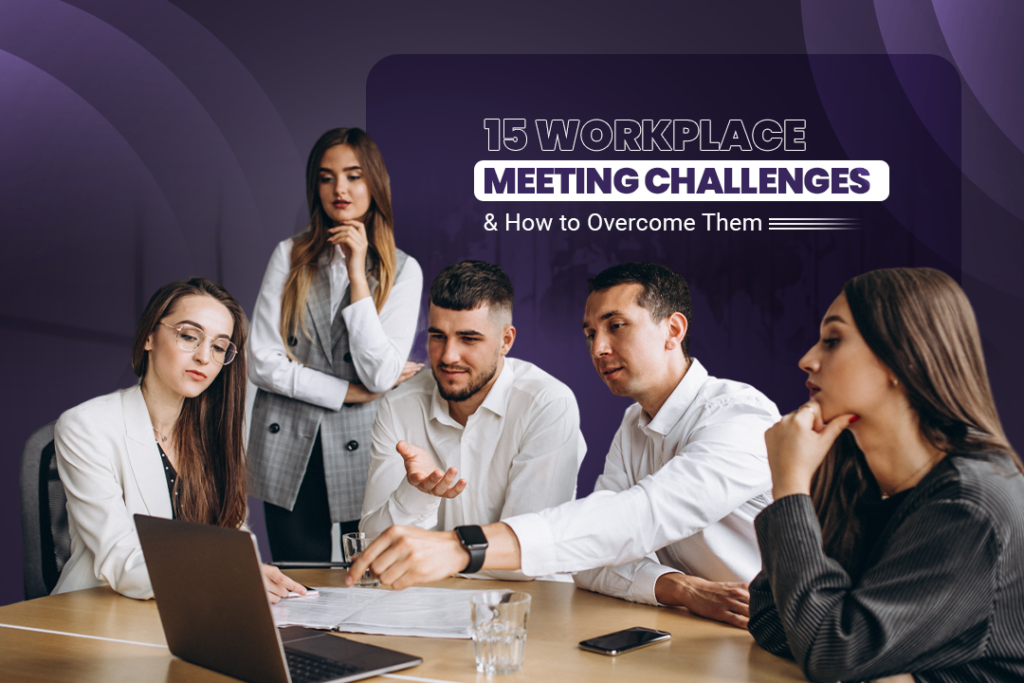
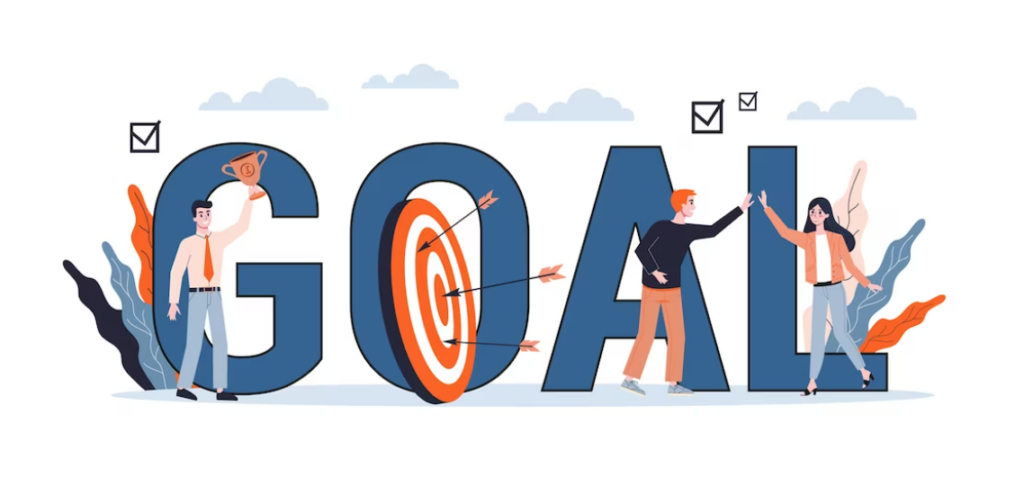





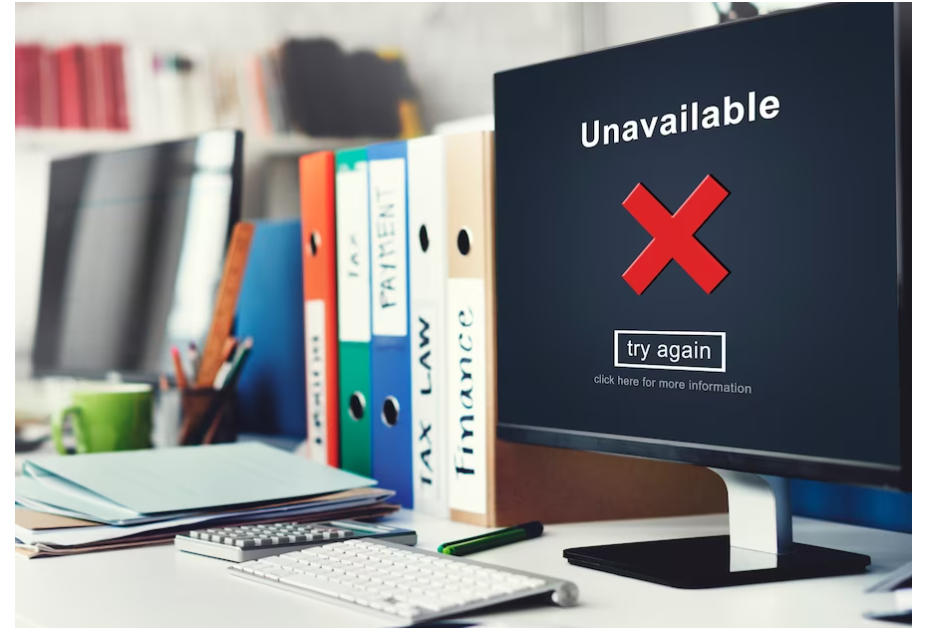

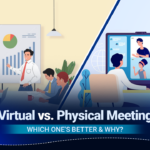

Comments are closed.